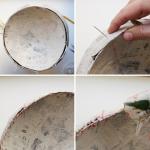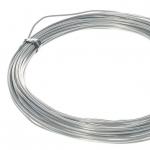Design of fire extinguishing systems and fire protection, development project documentation
The Fire Technologies company is an expert in the field fire safety! We welcome you and invite you to use our services! We work for you!
Development of project documentation is completed in the shortest possible time!
We will design fire extinguishing and fire protection systems of any type and any complexity for you. We are not afraid of difficult tasks! We don't shy away from small objects!
After all, designing a fire extinguishing system is equally important at any facility!
You can also order a free specialist consultation from us with a site visit to determine the degree of its fire protection and probable threats. We will calculate right in your presence different variants fire extinguishing prices for you!
Purpose and types of proposed fire extinguishing systems
Installing fire extinguishing systems solves a number of problems in cases where there is a possibility of a fire threat that cannot be prevented. And even at those facilities where, it would seem, the risk of fire is minimal, the design of a fire protection system and the installation of this system will save people’s lives at the right time!
This requires, first of all, the development of design documentation of appropriate quality.
The safety of people and property must be ensured as much as possible. Modern systems make it possible to automatically detect and localize a fire, notify people about it and start the fire extinguishing mechanism.
We design the following types of fire extinguishing systems
- Sprinklers. Their action consists of supplying a fire extinguishing agent to the fire site using a pipeline equipped with sprinkler-type sprinklers. Such systems are equipped with special thermal locks that respond to changes in air temperature in the room. We develop design documentation for splinter systems inexpensively!
- Deluge. They are used as curtains from deluge-type sprinklers and foam generators, effectively cutting off the fire zone. This is the simplest and most economical way to localize a fire and extinguish it.
- Aerosol. If there is a risk of fire in electrical equipment, designing fire extinguishing systems of this type is most appropriate. The aerosols used in them, effectively fighting fire, do not harm the materials and structures of power plants.
- Gas. They are triggered if the oxygen concentration in the surrounding space decreases, notifying about a fire and supplying fire extinguishing gas to the source of fire. Such fire protection systems are designed in high-tech industrial production due to their safety for equipment.
- Foam. This type is relevant for detecting and eliminating fires of increased complexity in places where flammable substances and materials are concentrated. In such systems, various operating principles can be used to trigger the supply of a water-foam solution to the fire zone.
- Powder. The principle of their operation is to supply small particles to the fire site. powder composition. This is the most optimal view systems that allow you to detect and extinguish fires of all classes from A to D in premises where other methods of extinguishing fire are impossible. We design powder fire extinguishing systems with a guarantee of their subsequent proper operation!
Design of fire extinguishing systems - stages and features
Regardless of the choice of system, in each case we strictly adhere to the following design stages:
- analysis of initial data on the customer’s activity profile;
- visiting the site to inspect the protected area;
- development of a system project and its coordination with the customer;
- delivery of the final version of the project;
- technical control of work on its implementation.
As a member of the SRO with extensive experience in fire safety equipment for various facilities, we bear full responsibility for the developed projects and provide a guarantee for the work performed.
Clients who have already used our services continue to cooperate with the Fire Technologies company for maintenance installed equipment. Order the design of fire extinguishing and fire protection systems from us to ensure the high competence of our specialists and impeccable service! If the development of project documentation is carried out by our specialists, you can be sure of the flawless operation of fire protection systems!
What is fire suppression engineering? This is the development and preparation of documents, the totality of which will affect the correct equipping of the facility with the appropriate automatic fire extinguishing system.
This responsible production procedure is carried out by specialists from a company licensed by the Ministry of emergency situations. Our company “Integrated Security” is one of these companies.
It employs specialists with experience and qualifications. They the best way will be able to realize the ideas and desires of the customer. The designer’s intention regarding the protection of a specific object is reflected in the design documentation, consisting of two parts - theoretical and graphic.
In the theoretical part, in addition to the calculations made, it is indicated what materials and equipment are involved in equipping the facility with an automatic fire extinguishing system. The basis for decision-making is the current rules and regulations.
Almost daily improvements in fire extinguishing technologies affect the improvement of equipment efficiency indicators. In a perfect and efficient fire fighting equipment, fire extinguishing agents are supplied using the latest methods submissions.
Robotic devices are being actively introduced around the world today. They eliminate the human factor, which can cause failure to complete planned tasks.
In Russia, new technical solutions have also been developed, where AUP RPK fire robots are involved in fire extinguishing technology. Patents confirm the novelty of such technical solutions. But despite all this, it is not yet possible to avoid specific calculations. For example, water foam or water fire extinguishing will function correctly with accurately performed hydraulic calculations.
And for long-term operation of powder and gas fire extinguishing installations, the correct calculation of the number of units and modules is necessary. There must be enough extinguishing agent to extinguish the fire. The safety of a particular object depends on professionally made calculations.
The graphic part of the project consists of documentation that indicates the placement of equipment on floor estimates. Also, in order to correctly connect devices, lay cables and wires, information lines, a plan is needed for carrying out such work.
Work within the framework of orders and standardization based on quality project AUPT facilitates the installation of the necessary fire extinguishing system for a specific facility.
Fire suppression design begins with determining the type of building. They can be residential or non-residential, energized. These are also rooms with complex technical devices or stored valuables and so on.
The type of room also affects the choice of equipment for it. For example, in warehouses with a large amount of metal in them, it is best to extinguish the fire with powder fire extinguishing systems. When designing for libraries, consider gas installation, since water or foam can render important documents unusable.
Factors such as the temperature in the building also influence the type of extinguishing. Foam, water or mist sprinklers are used if the temperature will not drop below zero. If the temperature is lower, then it is advisable to use gas or powder fire extinguishing systems.
Design various systems taking into account what affects their efficiency, will bring savings and ensure excellent system performance. For example, when designing sprinkler systems, consideration must be given to dividing a large area into several sections. In this case, a separate signal must serve each such section.
When designing powder systems it is important to accurately calculate the number of modules and their correct placement. In the calculation made, the possibility of the powder being sprayed unevenly is taken into account.
Design gas fire extinguishing: modular or centralized depends on the number of premises to be protected, their area, as well as the type of main building in which the system is located.
The correct calculation depends on these parameters, in the implementation of which special techniques are used that include the type of fuel, type of installation and size of the territory. For example, neglecting mass control of such fire extinguishing agent like "Freon-23" is unacceptable.
Fire extinguishing design is controlled government services security, therefore all documents are drawn up in accordance with existing standards and standards.
NPF "Garant" offers design services for fire extinguishing systems for industrial, administrative, commercial, public and other facilities. We will perform the entire range of work with a quality guarantee.
Design of fire extinguishing systems is one of the most complex and critical types of development. Creating a project requires specialized knowledge and experience, as well as the availability of SRO approvals and licenses from the Ministry of Emergency Situations of the Russian Federation. Our company has all the necessary licenses from the Russian Ministry of Emergency Situations and SRO approvals for production design work at industrial and civil construction sites.
For projects with foreign capital, the project often requires compliance with international standards, so for such customers we carry out projects that meet not only Russian standards, but also international FM Global and VdS.
In projects we use pipelines as welded joints, and on groovelocks (groove joints or weldless couplings, clamps), as well as on non-flammable plastic pipes.
NPF "Garant" has all the necessary licenses and certificates that confirm the company's competence in the field of designing fire extinguishing systems. Having our own material and technical base and a staff of qualified employees allows us to carry out projects of varying complexity and volume.
Including, we provide the following specialized services:
development and approval of STU (special technical specifications);
assistance in carrying out fire prevention measures;
calculation of individual fire risk.
We carry out projects for fire protection tanks and external fire water supply systems.
Fire protection classification
The following main types of fire extinguishing installations are distinguished:
- sprinkler A popular option for arranging fire protection in production, office, warehouse premises, shopping and exhibition centers and others public buildings. The principle of operation is to supply fire extinguishing agent to the source of fire from pipelines that have thermal sensors and special sprinklers. Pipelines are installed, as a rule, in the interfloor space or under suspended ceiling;
- fine spray sprinkler. We recommend it in museums and archives because it does not damage exhibits and papers. The principle of operation is similar to a sprinkler, but irrigation occurs not with large drops of water, but with a finely atomized mist. The estimated water consumption is lower, so it is often possible to save on tanks, pumps and main pipelines;
- deluge dry pipe. Fire extinguishing installations are equipped with deluge sprinklers and deluge valves. Used to create a curtain of fire extinguishing agent. There is usually no water in the pipelines, so deluge systems are suitable for use in cold rooms;
- foamy. Since a flammable liquid spill cannot be extinguished with water, foam is used as a fire extinguishing agent. The fire extinguishing system design is based on foam generators and foam nozzles;
- gas. When smoke is detected, the system releases gas from the cylinders and creates a mixture of air in the surrounding space in which combustion is impossible. This is the most in demand fire protection in server rooms, high-tech facilities and archives. The gas does not cause corrosion of equipment; the consequences of extinguishing are easily eliminated by ordinary ventilation or pumping out the gas with pre-installed smoke exhausters. Inexpensive installations are usually used in premises where people are not constantly present, since the gas poses a danger to the respiratory system, etc. At the moment, inergen installations are the most interesting, since they are not dangerous to humans. In the event of a fire, they release an inert gas, which reduces the oxygen concentration in the air to a level at which combustion is impossible;
- powder The principle of fire extinguishing is based on the supply of crushed powder composition to the fire zone. This type of extinguishing is used in small industrial premises, oil refineries, electrical switchboards, boiler rooms, etc.;
- aerosol. An aerosol extinguishing agent is supplied to the combustion zone. This type of installation is used to extinguish fires in power plants, electrical equipment, and transport facilities. Aerosol does not provide negative impact on materials and human health;
- with monitor controlled barrels. Connects to a water or foam fire extinguishing system. Used for helipads, oil refineries, stadiums, etc.
Features of designing fire extinguishing systems
Before starting to develop a project, it is necessary to conduct a preliminary examination of the site and the available architectural and construction documentation. Particular attention should be paid to the following points:
- determining the type of object. From precise definition The type of object depends on the choice fire extinguishing installation and the price of designing a fire extinguishing system;
- equipment selection. Depending on the type and purpose of the building, choose the type fire installation: water, powder, gas, aerosol, etc.;
- definition temperature regime building. This is also necessary for optimal choice equipment. For example, if the temperature will not drop below 0 degrees Celsius, then it is beneficial to use water, sprinkler or deluge systems. When the indicators are below zero, gas and powder installations are used.
In addition, when developing a project, the fire hazard class of the building, the state of communications, and the type of stored materials are taken into account.
Main stages of designing fire extinguishing systems
- Collection and study of information about the development object. The building is examined in detail, plans and layouts of utility networks are studied.
- Compilation terms of reference. After collecting initial information, technical specifications for design are prepared fire system building. The document is approved by the customer of the work.
- Creation of a project that includes the stages of preliminary, technical and detailed design. Based on the results of development, the client receives a fully completed project. If desired, the design of the fire extinguishing system can be approved by the regulatory authorities.
NPF Garant LLC carries out a range of works on the design of fire extinguishing systems in Moscow and Novosibirsk. We have already implemented a large number of projects at large industrial enterprises, V shopping centers, office buildings, etc.
Are you looking to improve fire safety in your facility? Then it’s time to use the services of a specialized company that has the necessary certificates for carrying out such work. Territory Security LLC offers to order the design of a fire extinguishing system for legal entities and individuals in Moscow and beyond. We are pleased to offer you the design and installation of turnkey fire extinguishing systems with approval of the project by higher authorities.
Everyday working conditions in office, retail and other commercial buildings dictate new rules for the level of security systems. Today it is difficult to imagine a security system without high-quality integration with a fire extinguishing system.
If you are interested in designing automatic fire extinguishing systems in Moscow, you are on the right track, Security Territory LLC is at your service! Today our company has the necessary base and experience to design fire extinguishing systems of various types, namely:
- water;
- foamy;
- gas;
- using powder mixtures;
- with the participation of aerosol substances.
The need to design fire extinguishing systems
In fact, such a project cannot be done without. Commissioning industrial buildings and commercial buildings is impossible without verification of such a project by regulatory authorities. The project acts as an official document containing specifications and diagrams on the basis of which the entire system is installed.
Considering the fact that hundreds of houses, office and commercial buildings are being built in the metropolis every year, designing a fire extinguishing system in Moscow is a fairly popular service, and we offer you to order it inexpensively.
Design of fire extinguishing systems - work procedure
Have you already decided to order the design of a water or gas fire extinguishing system from our company? The only thing left to do is to strictly follow the established order of work. When working with each client, we are guided by the following principles:
- obtaining initial data on the facility - our specialists go to the site to inspect and analyze the building, plan water intake points and identify functional areas;
- drawing up technical specifications;
- determining the cost of the project;
- design stage – at this stage, our company’s specialists are guided by current regulations;
- stage of project approval by higher authorities;
- installation of a fire extinguishing system.
Also, in our company you can in Moscow and forever forget about worries about the safety of property. Competitive price, integrated approach, short deadlines and 100% guarantee– all this speaks in favor of ordering services from us!
If you have any questions, you can use the services of the company’s consultants, who, having sufficient knowledge, will inform you in detail about the benefits various types systems, their configuration and proper operation.
– this is our hobby, we love our work and know how to protect you and your property by 99%.
Automation of support systems fire safety raised to new level quality of fire fighting. Outdated manual analogues are gradually becoming a thing of the past, leaving room for more efficient devices. This applies to both means and alarms that are organically integrated into such complexes. At the same time (ASPT) requires a professional approach at every stage of its implementation. Full equipping of a facility with means for detecting and fighting fires includes design, development and installation activities. In this case, it is necessary to follow technological standards, which will allow you to avoid errors during the installation of equipment.
General information about ASPT complexes
Modern fire extinguishing systems are designed to provide complete control in the process of extinguishing a fire without the direct participation of people. Depending on the design solution used, ASPT can be divided into engineering complexes and individual modules. The installation of modular fire extinguishing systems is considered the simplest, since they have a standardized design and are intended for standard facilities - for example, warehouses and industrial workshops. Much more difficult installation engineering ASPT, since they require careful design, adjustment activities and in-depth service. Such fire extinguishing systems are more expensive, but can be implemented at various objects and further ensure effective localization of ignition with increased safety for property and people.
Composition of automatic fire extinguishing systems
Despite the many classes, varieties and configurations of ASPT, it is possible to identify a common set of elements that form their structure. In particular, installation automatic system fire extinguishing involves equipping the facility with devices for detecting ignition sources, control infrastructure and means of delivering substances and materials for fire extinguishing. To detect fire, alarm detectors are used: optical-electronic, thermal, gas and other models. The delivery of fire extinguishing agents depends on what substance is used. Thus, there are ASPTs operating on aerosol, gas, water, foam, powders, etc. Pipelines, nozzles, various nozzles and sprinklers can be used for their delivery. The choice of a specific extinguishing agent depends on the conditions of its use. For example, in residential premises there will be special requirements To environmental safety in the operation of the system, and on production facilities Efficiency comes to the fore - especially when extinguishing wiring and explosive substances.
Sprinkler water ASPT
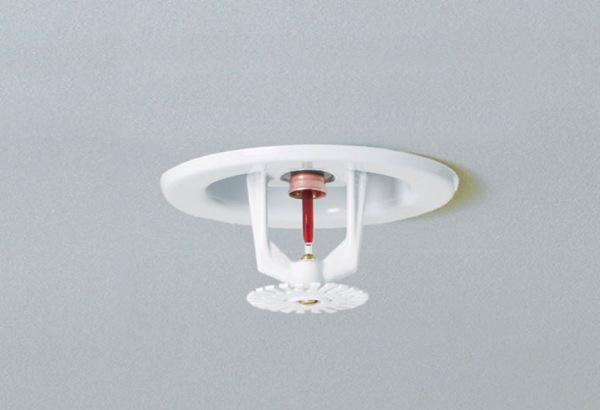
Systems are among the most common. IN in this case we are considering an installation that includes a special sprinkler - the so-called sprinkler. This element is integrated into the piping system, which can be filled with air, foam or water. There are also combined models in which the supply pipeline system is always filled with water, and air can be used in the supply and distribution channels. water fire extinguishing systems are capable of determining the moment to perform their work without human intervention. Initially, the sprinkler is in a closed state, which is ensured by a thermal lock. Upon reaching a certain temperature in environment The closing flask depressurizes and after 5-10 minutes the installation begins fire extinguishing.
Deluge water ASPT
Despite the similarity of deluge installations with sprinkler systems, there are many fundamental differences. First, it is a different approach to fire detection. In such systems, the fire alarm does not operate using temperature-sensitive flasks and thermal locks, but using external fire detectors, that is, fire alarms with accompanying sensors. Secondly, water consumption in deluge ASTPs is greater, and the irrigation system as a whole is more complex. Built-in sprayers can dispense fine water in the form of droplets measuring 150 microns. At the same time, irrigation nozzles can be jet, gas-dynamic 2-phase, and can also be equipped with deflectors to break up the jets. Deluge water systems are most successful in localizing fires, dividing areas into sectors, preventing the spread of hot spots and preventing the combustion of toxic substances.
Gas fire extinguishing

Modern fire extinguishing systems, which operate using gas fire extinguishing agents, can be installed in both non-residential and residential premises. It depends on what kind of gas is used. Recently, manufacturers have provided for the use of compounds such as argonite and inergen, which are non-synthetic and do not affect harmful effects to the atmosphere. The principle of extinguishing in this case is based on the replacement of oxygen, a decrease in the content of which leads to a weakening of combustion. However, the installation of fire extinguishing systems using gas mixtures must also take into account the fact that a sharp decrease in oxygen levels can contribute to illness in people who are in the room. And yet, the main objects where the installation of gas automatic fire extinguishing systems is recommended are non-residential premises- server rooms, libraries, museums, banks and offices. This is due to the fact that during the gas extinguishing process, material values are completely preserved.
Design of fire extinguishing systems
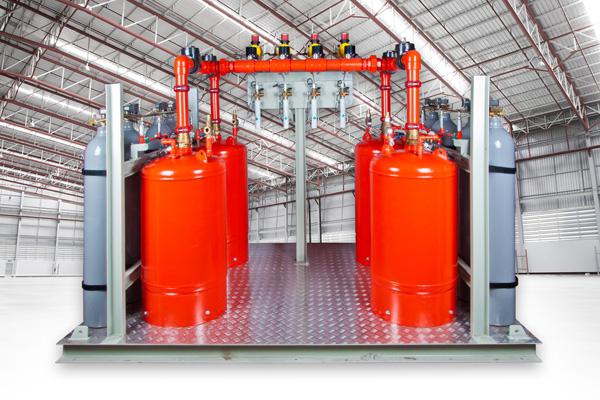
The main task facing designers is the preparation of technical and estimate documentation, which provides a description of the system and its elements in finished form, and also provides regulatory data for installation. The step-by-step design of fire extinguishing systems can be represented as follows:
- Visit of specialists to the work site.
- Definition optimal type extinguishing systems.
- Drawing up technical specifications and its approval by the customer.
- Development of design documentation based on technical specifications.
- Coordination of prepared documents with supervisory authorities.
- Implementation of the technical part of the project in accordance with the standards.
Design of the graphic part
To visually display the future fire extinguishing system, the development of graphic documentation is also necessary.  In this case, the authors must prepare a plan that takes into account the characteristics of the specific site where the object is located. In particular, exit routes from the territory, opportunities for access of special equipment, water supply layouts, placement of sprinklers, nozzles, hydrants and alarm devices are indicated. If used stationary systems fire extinguishing, it is also necessary to take into account the location of containers and water tanks and pumping stations. Diagrams that indicate evacuation routes for personnel, residents and material assets. Planning safe exit carried out not only in relation to a specific building or structure, but also from the adjacent territory, within which the spread of fire is possible.
In this case, the authors must prepare a plan that takes into account the characteristics of the specific site where the object is located. In particular, exit routes from the territory, opportunities for access of special equipment, water supply layouts, placement of sprinklers, nozzles, hydrants and alarm devices are indicated. If used stationary systems fire extinguishing, it is also necessary to take into account the location of containers and water tanks and pumping stations. Diagrams that indicate evacuation routes for personnel, residents and material assets. Planning safe exit carried out not only in relation to a specific building or structure, but also from the adjacent territory, within which the spread of fire is possible.
General rules for installing fire extinguishing systems
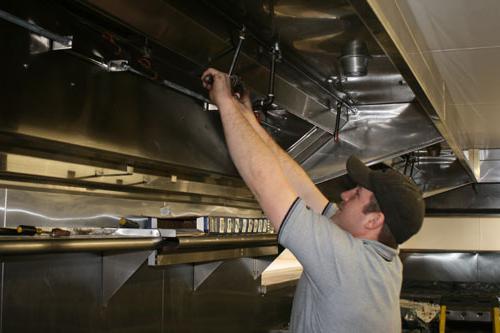
Depending on the type of system selected, electrical, plumbing, and welding may be required during the installation process. The wizard’s work mainly involves fixing system elements, as well as connecting them into a common infrastructure through special nodes. Standard installation automatic fire extinguishing system includes the following work:
- Installation of sensors, indicators and others sensitive elements that detect signs of fire.
- Integration of elements that provide notification of an emergency situation.
- Installation of means for the storage and subsequent transfer of substances intended for fire extinguishing.
- Installation of sprayers that directly perform the function of extinguishing a fire.
An important element of such systems is the fire alarm, which can act as part of the complex in the form of the mentioned sensors or perform a separate function as a detector.
Installation of water fire extinguishing
By and large, the entire technical infrastructure of ASPT is aimed at servicing the material used to fight fire. In the case of water complexes, a set of system components can be represented pumping station, liquid reservoir, control units, pipeline and irrigation devices. After design, the installation of an automatic fire extinguishing system of this type aims to correctly distribute and combine the elements into a common complex.
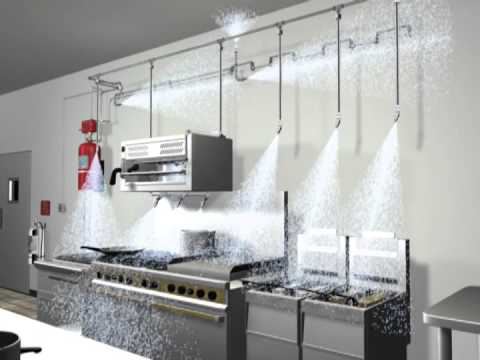
The pumping station can occupy a separate room, but it must be insulated with fireproof screens. Optimal places for installing sprinklers - this ceiling surfaces and floor beams. But another principle of their integration is also possible, including a hidden one - it all depends on the threat of fire in a particular room. The units that regulate the operation of the alarm and fire extinguishing system are located in a safe place with free access by personnel. The pipeline and the tank are interconnected and can be connected to the central water supply, but only subject to sanitary standards.
ASPT service
Events for maintenance can be determined at the system design stage. As a rule, they involve checking the elements of the complex for the correct performance of functions and the condition of the working resource. At the same time, servicing fire extinguishing systems involves analyzing the conditions in which the equipment is kept. If, for example, the nature of the operation of a room or building has changed, adjustments must be made in accordance with it. technical part complex.
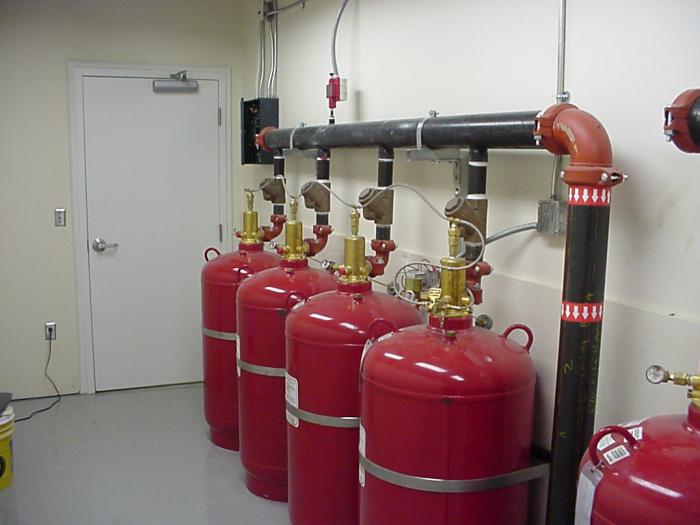
How much do ASPT cost?
In usefulness modern systems there is no doubt about fire extinguishing, but when planning to equip with such equipment, you should also prepare for significant costs. The cheapest solutions include autonomous complexes that include several modules. Powder based systems with a standard layout for small room can cost 11-13 thousand rubles. But in most cases, such a solution is difficult to achieve, and it requires the installation of a fire extinguishing system, the cost of which can exceed 100 thousand rubles. For this amount, the customer receives full fire protection in the form of an automatic complex equipped with alarm sensors, a modern control center and advanced functionality. The most expensive solution may be an ASPT with finely sprayed water, which includes several modules united by a common control point. A similar system for equipping a sales area can cost about 500 thousand rubles.


